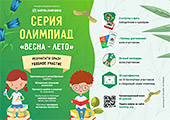Short term plan
| LESSON: Story time “The Queen Bee” | School: | |||||||
| Date: | Teacher name: | |||||||
| CLASS: 1 | Number present: | absent: | ||||||
| Learning objectives(s) that this lesson is contributing to
| 1. to choose a story about “The Queen Bee” for which you can get hold of visual and story sequences to project 2. encourange learner engagement with the story through this process of collective class telling. 3. focus learner on a particular point in the story and where the characters are. | |||||||
|
| 1.L1Recognize short instructions for basic classroom routines spoken slowly and distinctly. 1.S3 pronounce colors and expressions intelligibly 1.S6 make introductions and request in basic interactions with others | |||||||
| Lesson objectives | All learners will be able to: | |||||||
| Sing a song’’ Hello’’ To practise greetings to listening comprehension skills through a story | ||||||||
| Most learners will be able to: | ||||||||
| Say simple words with teacher’s support To listen to a story from Germany about how some animals help a kind man | ||||||||
| Some learners will be able to: | ||||||||
| Act out with teacher’s support | ||||||||
| Success criteria | Pupils achieve if: Can pronounce words Can listenstory | |||||||
| Previous learning | Use new vocabulary for detailed information | |||||||
| Plan | ||||||||
| Planned timings | Planned activities (replace the notes below with your planned activities)
| Resources | ||||||
| Start
| Learners are introduced with the lesson objectives /D/ Organize the lesson Greetings Hello, Good morning pupils! How are you? Fine, thanks. Sit down. Warm up. Brain storming. We are fine! We are great! We are wonderful! Well done! Dividing groups. Divide two groups – the first group sit down at the table where the picture painted a yellow bee. -the second group sit down at the table where the picture painted a red bee. |
Flashcards | ||||||
| Middle
| What was your homework for today? /D/ Teacher demonstrates and drills basic transports, prepositions of place using visual at board. Pre-teaching Bee – King – Queen – Duck – Stone – Key – Princess – Prince – /P/ /f/ Colouring / colour quiz Learner given worksheet with the outline of recognizable objects e.g. In feedback learners say colours. /G/ Group learners given an image of colours and cut-outs of key characters. Check learners are familiar with all names.
(An activity to introduce the topic of the story.) Draw simple sketches of a bee, an ant and a duck on the board. Have a discussion, in L1 if necessary, about what these animals can do, e.g. fly, dig in the ground. How can these animals help a kind young man? Accept all answer. Then explain to the pupils that they are going to listen to a story about a young man and these animals. Use the story cards to present the story. (See the introduction on how to use the story cards.) Have you rest? Double, double, this, this Double, double, that, that Double this, double that Double, double, this, that Let’s listen! Play the CD. The pupils listen and follow along in their books. Play the CD again. The pupils repeat, chorally and/ or individually. Summary. There were three brothers. Two of them were mean and cruel and wanted to destroy everything around them. They tried to harm the animals they came across like ants, ducks and bees. The third brother was nice and kind and didn’t let them harm these animals. One day the three brothers came across on enchanted castle. At the castle there was a little old man who asked for their help. They were to perform three tasks. Whoever was successful would free the castle. The first task was a collect the princesses thousand jewels, scattered in the woods. The ants helped the youngest brother and collected them. The second was to fetch the key to the princesses’ room the lake, which the ducks did for him. The third was to pick out the youngest princess from the three sleeping princesses; they looked exactly alike and the only difference was that the oldest had eaten a bit of sugar before they slept, the second a little syrup, and the youngest some honey. The queen bee picked out the youngest. Upon completion of the third task the spell was lifted from the castle and all those who had been turned to stone woke up again. In the end, the youngest brother married the youngest princess. Story cardsPut up the story cards in random order. Ask the pupils to come and put the cards in the right order. Play the CD for verification. Have a discussionin L1 if necessary, with the pupils about the maral of the story. Tell the pupils that we should be kind and that kindness is always rewarded. Assign roles and allow the pupils, in groups, some time to rehearse. Ask the groups to act out the story. They can use the story cards for help. Extension activity (optional) Before going into class. Photocopy the story cards from the Teacher’s Resource Pack CD ROM, one set per pupil. Hand out the story cards. Ask the pupils to colour them and use them to make their own story books.
/W/ use a visual presentation of objects complete with colours for feedback Use animation flashcards:
+ =
+ =
+ =
/W/ /f/ Then learners make up the clusters. Learners move the characters.
/G/ Repeating the theme with group learners given an image of the colours and cut-outs of key characters. Check learners are familiar with all names.
|
Flashcards Watch Slide
Colour Song www.kindsinglish.com
Clusters, flashcards
Flashcards Watch Slide
| ||||||
|
End 13-min
2-min | (An activity to consolidate the language of the lesson Project: My Queen Bee Before going into class Have the materials listed below ready to use Tell the pupils they are going to make a Queen Bee. Guide them through the cutting and gluing. Materials
1 Cut out a yellow strip of construction paper the length and width of the toilet paper roll. 2 Staple the strip around the toilet paper roll. 3 Cut out the wings and the head, using the white/fresh-toned construction paper. Cut three black strips and the antennae out of the black construction paper. 4 Staple the black stripes to the toilet paper roll. 5 Then staples the wings to the back of the toilet paper roll. Finally, glue the bee’s face to the top front of the toilet paper roll and draw a face. Last but not least, glue the antennae to the back of the bee’s head. Make sure you display the pupils’ work around the classroom. Activity book If you wish, you can do page 24 from the Activity Book during this lesson or next one. 9-10 smiles- “5” 8-6 smiles –“4” 5-3 smiles - “3” The song “Good bye” |
CD - player | ||||||
| Additional information | ||||||||
| Differentiation – how do you plan to give more support? How do you plan to challenge the more able learners? | Assessment – how are you planning to check learners’ learning? | Cross-curricular links | ||||||
| More support: Provide less able learners with the four sentences written on a worksheet so they can listen and read. More able learners: | Monitor learners to check they can pick up specific details when listening to facts reported from map, facts about natural disasters; detail from video. Note those who
| Learners work in groups apply skills and knowledge to a practical and cooperative task, and produce their own materials. All of these lesson correlate with the aims of critical and creative communication set out . Job and work: developing vocabulary range to communicate knowledge of natural disasters; | ||||||
| Reflection Were the lesson objectives/learning objectives realistic? What did the learners learn today? What was the learning atmosphere like? Did my planned differentiation work well? Did I stick to timings? What changes did I make from my plan and why?
| Use the space below to reflect on your lesson. Answer the most relevant questions from the box on the left about your lesson. All lesson and learning objectives were met. The lesson was exciting. Learners were always in action and interaction. Game style lessons prove to be very useful. | |||||||
| Simulation game created this opportunity for them.
| ||||||||
| Summary evaluation
What two things went really well (consider both teaching and learning)?
1: Simulation game
2: Video and vocabulary prior to the game What two things would have improved the lesson (consider both teaching and learning)?
1: Better level of English language of learners. Inability of communication in English language of some learners keeps behind more able ones as well.
2:Learners came late after flash mob break. This usually happens.
What have I learned from this lesson about the class or individuals that will inform my next lesson?
| ||||||||













